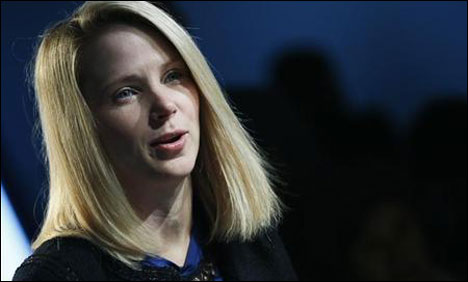- Web
- Humsa
- Videos
- Forum
- Q2A



Dec. 8, 2012 — University of North Dakota scientist Mark Hoffmann's version of Star Search goes a long way -- a very long way -- out into the universe.
Hoffmann, a computational chemist, and his colleagues Tryve Helgaker, a well-known Norwegian scientist, and co-authors E.I. Tellgren and K. Lange, also working in Norway, have discovered a molecular-level interaction that science had puzzled over for decades but had never seen.
That discovery, it turns out, may redefine how science views chemical compound formation. It also answers questions about what goes on in places like white dwarfs, the super dense cores of stars nearing the end of their life cycles.
"We discovered a new type of chemical bonding," said Hoffmann, known globally for his pioneering work in the theory and computer modeling of chemical compound formation.
"That's a pretty bold statement, but I'm not kidding you! It's a brand new type of chemical bonding, not previously known to science."
Hoffmann and his colleagues have rewritten the chemical rule book for assessing what happens in the night sky. It's about answering timeless questions such as how stars form, evolve, and eventually die.
Their work also provides the secret for how some compounds form in the distant universe. This momentous discovery appears in an article in a recent issue of the journal Science.
"Our discovery addresses one of the mysteries in astrophysics about the spectrum of white dwarf stars," Hoffmann said. "White dwarfs have an unusual spectrum that has been thought to result from polymerized hydrogen and helium which, of course, do not occur on Earth.
"It's possible out there because the magnetic fields on white dwarfs are several orders of magnitude larger than anything that can be generated on Earth."
The closest white dwarf, Sirius B, is a faint twin to the brightest star in the night sky, Sirius A. It's about the same size as our sun, but much denser; its average density is 1.7 metric tons per cubic centimeter, or about 3,000 pounds compressed into a box the size of a sugar cube.
Hoffmann and his team described a magnetically induced bonding process between materials. "There was speculation that this phenomenon should exist, but no one had the proof, and no one -- until the team I'm on described the process -- had the theoretical structure and the computational tools to address this," he said.
On Earth, even the boldest military experiments generate a peak of maybe 1,000 Tesla -- a measure of magnetic force (refrigerator magnets generate a thousandth of one Tesla). But on Sirius B, for example, magnetic fields are on the order of 200,000 to 400,000 Tesla, enough to challenge the electronic interactions that dominate the chemistry and material science we know on Earth.
 European astronomers on Wednesday reported they had detected a planet with about the mass of Earth which orbits the closest star to the Sun.The observation breaks new ground in the hunt for exoplanets — worlds that exist in other solar systems — although the planet itself is not “another Earth” as it is located in a scorchingly hot zo..... Read more
European astronomers on Wednesday reported they had detected a planet with about the mass of Earth which orbits the closest star to the Sun.The observation breaks new ground in the hunt for exoplanets — worlds that exist in other solar systems — although the planet itself is not “another Earth” as it is located in a scorchingly hot zo..... Read more
 Yahoo Inc Chief Executive Marissa Mayer said the company's search partnership with Microsoft Corp was not delivering the market share gains or the revenue boost that it should.
"One of the points of the alliance is that we collectively want to grow share rather than just trading share with each other," Mayer said at the Goldman Sachs Technolog..... Read more
Yahoo Inc Chief Executive Marissa Mayer said the company's search partnership with Microsoft Corp was not delivering the market share gains or the revenue boost that it should.
"One of the points of the alliance is that we collectively want to grow share rather than just trading share with each other," Mayer said at the Goldman Sachs Technolog..... Read more
 TORONTO/NEW YORK: BlackBerry will likely face tough questions about its future at its annual meeting on Tuesday after dismal quarterly results last week triggered a 28 percent plunge in the Canadian smartphone maker’s share price.
Sales of BlackBerry’s make-or-break new line of smartphones in the quarter ended June 1 came in well below..... Read more
TORONTO/NEW YORK: BlackBerry will likely face tough questions about its future at its annual meeting on Tuesday after dismal quarterly results last week triggered a 28 percent plunge in the Canadian smartphone maker’s share price.
Sales of BlackBerry’s make-or-break new line of smartphones in the quarter ended June 1 came in well below..... Read more












 Clean Chit (Faisal Raza Abidi ...
Clean Chit (Faisal Raza Abidi ...  Akhir Kiyon - 16th December 2...
Akhir Kiyon - 16th December 2...  To The Point - 16th December ...
To The Point - 16th December ...  Capital Talk â
Capital Talk â  Kal Tak - 16th December 2013
Kal Tak - 16th December 2013  Bay Laag - 16th December 2013
Bay Laag - 16th December 2013  Kharra Sach - 16th December 2...
Kharra Sach - 16th December 2...  Awaam - 15th December 2013
Awaam - 15th December 2013 





 Gold Miner
Gold Miner  Superbike GP
Superbike GP  Whipsaw Fighter
Whipsaw Fighter  PacMan
PacMan 


